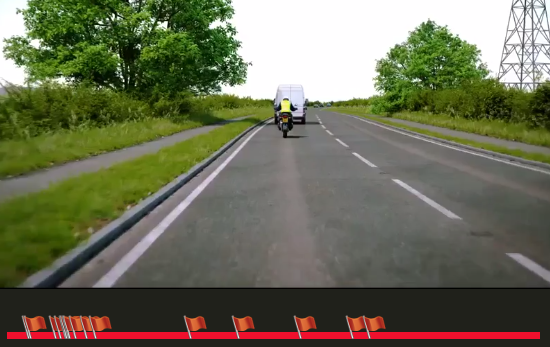
As a result, VR assessment is exceptionally ecologically valid. (2018) argued that VR is particularly useful in the assessment of risk behavior due to its immersive characteristics and its ability to collect real-world behavioral metrics. However, the expected advantages of VR-based simulations are not restricted to increasing joy or motivation VR applications are particularly interesting for assessment purposes. In recent years, VR simulations have become affordable even for private use and therefore, enjoy great popularity (e.g., Stanney et al., 2020).

Simulations often comprise virtual reality (VR) features, such as stereoscopic view provided by head mounted displays (HMDs), and in- and output devices that allow for a natural interaction with the simulation (e.g., force feedback steering wheels and seats in driving simulation). Technology-based simulations are well-liked tools for entertainment, learning, and research in cases in which performing the corresponding experiment or training in real-life would be too expensive, too dangerous, or even impossible. However, the interrelation between these three variables could not be conclusively clarified in the present study and thus represents a research aim that could be addressed in future studies. The use of an HMD resulted in a clearer and more abrupt speed reduction, more virtual presence, and a higher degree of simulation sickness. However, there were significant differences between the two display conditions.
#PRACTICAL HAZARD PERCEPTION TEST DRIVERS#
Results indicate that the experienced drivers showed very similar driving and risk behavior as the inexperienced drivers in both experimental conditions.

Eighty experienced and less experienced drivers completed six simulation-based hazard perception scenarios, which were displayed either via a triple-monitor set-up or an HMD. Moreover, we studied the interplay between display mode, sense of presence and simulation sickness. The present experiment investigated whether this effect could be enhanced by an even more immersive presentation technique for driving simulation: a head-mounted display (HMD). Research on spatial presence in other contexts support this assumption. The wider field of view was assumed to cause the drivers to be more present in the virtual world, which in turn provoked more natural scanning of the road and therefore, earlier hazard detection in experienced drivers.

In this context, prior research demonstrated that a wider field of view (three monitors compared to a single monitor) led to earlier speed adjustments in response to potential hazards -especially for experienced drivers. Although configurations and fidelity differ considerably between driving simulators, studies comparing the impact of their distinct features on driving performance and test validity remain rare.
#PRACTICAL HAZARD PERCEPTION TEST DRIVER#
Simulators, which offer challenges that are indeed comparable to driving in real traffic, but at a very low risk of physical injury, have the potential to complement theoretical and practical driver trainings and tests. Since virtual reality is generally regarded as an appropriate environment for measuring risk behavior, simulators are also used to assess hazard perception, which is considered to be one of the most important skills for safe driving. Department of Education, Saarland University, Saarbrücken, Germanyĭriving simulators are becoming increasingly common in driver training and assessment.


 0 kommentar(er)
0 kommentar(er)
